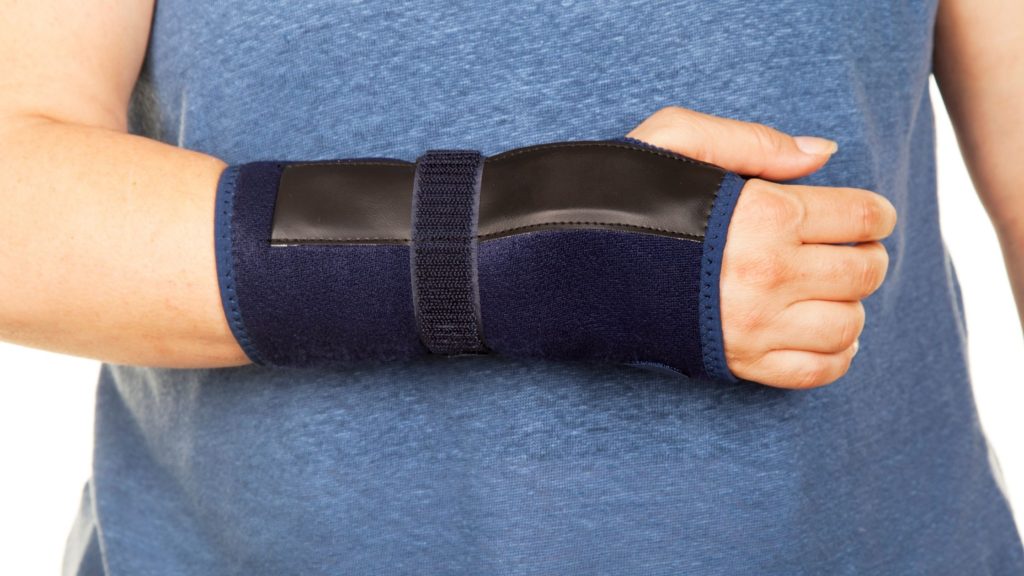
- Colles’ fracture is a common type of wrist fracture that occurs when a person falls on an outstretched hand.
- After removing the cast, it’s important to start exercising the wrist to restore its range of motion and strength.
- However, following a proper exercise program is crucial to avoid further injury or complications.
Dinner fork deformity in the wrist happens due to Colle’s fracture around the wrist joint. If you have suffered this fracture, you may remember how falling in the outstretched hand led to this. Colle’s fracture can happen to anyone, but it is commonly seen in middle-aged females.
In this article, we will learn about Colle’s fracture, its common causes, its treatment and most importantly, its physiotherapy exercises. Let’s get started.
Physiotherapy exercises for Colle’s fracture
Fracture segments in Colles fracture are usually displaced, so your surgeon must reposition the fractured segment under local anaesthesia. This can be done through surgical or non-surgical means. The broken site must then be immobilized until the bone has healed.
However, problems may arise after the plaster is removed. Due to the immobilization, pain and stiffness may occur. To overcome these issues, physiotherapy and exercise are crucial. It’s important to note that exercises should start as soon as the hand is put into the plaster.
All joints not covered by the plaster should be exercised to prevent pain and stiffness, including the fingers, thumb, elbow, and shoulder joints. Swelling of the hand and finger is common after Colle’s fracture, for which you can follow a few practical home tips for hand swelling.
1) Wrist flexion-extension exercises
Wrist and small joint finger stiffness are the most common issues after this fracture. Sometimes, stiffness even occurs at the elbow and shoulder joints. So, exercises are essential to regain joint range of motion and strengthen the muscles.
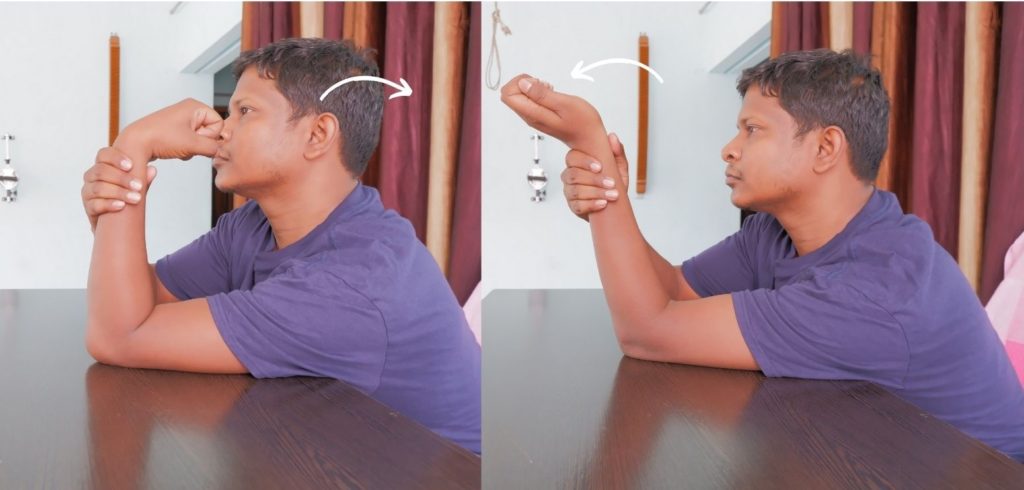
The wrist flexion-extension exercise is a simple yet effective way to prevent wrist joint stiffness and improve blood circulation around the forearm. To perform this exercise, you should ensure that a sling comfortably supports your forearm. Once you are comfortable, move your wrist joint up and down, as shown in the figure.
- Extend your wrist by moving your hand up towards your fingers.
- Hold this position for a few seconds before flexing your wrist by moving your hand down towards your forearm.
- Again, hold this position for a few seconds before returning to the starting position. This completes one repetition.
- Performing at least 20 repetitions in a session is recommended, but the more you do, the better.
You can perform this exercise whenever you find the time, whether you are sitting or, ideally, watching TV. This will help prevent wrist joint stiffness and maintain your forearm muscle tone.
2) Wrist circumduction
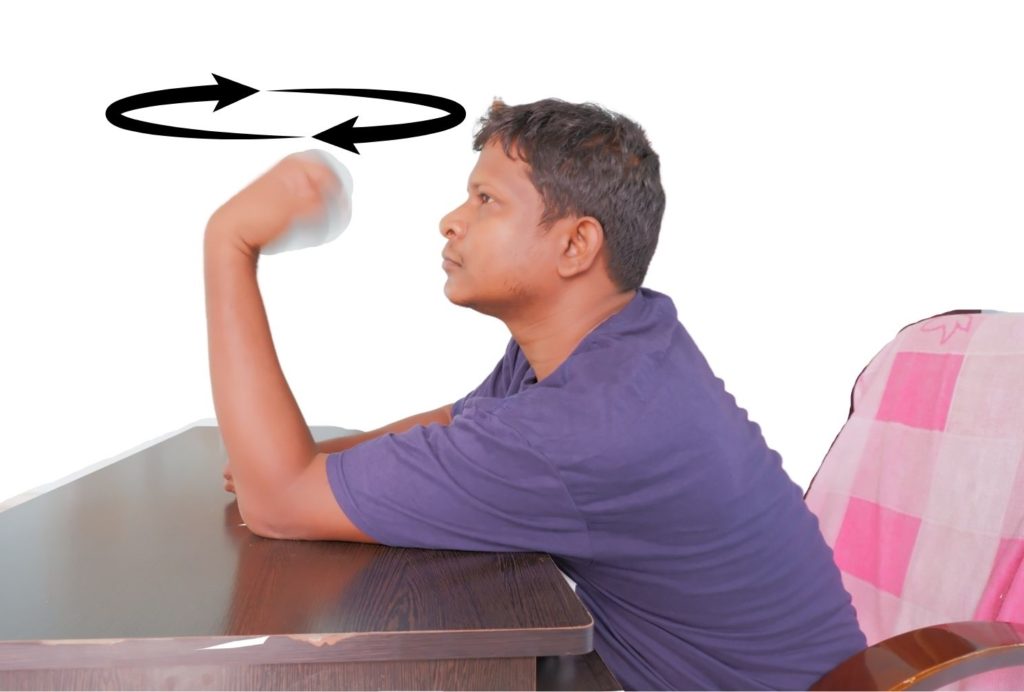
The wrist circumduction exercise is a simple wrist range of motion (ROM) exercise designed to prevent wrist stiffness and improve flexibility.
- To perform this exercise, sit before a table and flatten your arm over it. Keep your arm vertically over the table, as shown in the figure above.
- Then, slowly rotate your wrist in a circular motion, clockwise and counterclockwise. Keep your arm still and only move your wrist during the exercise.
- As you rotate your wrist, pay attention to any areas of tightness or discomfort and adjust your movements accordingly.
- You can do as many repetitions as you feel comfortable, but aim for at least 10 repetitions in both directions.
3) Stretching exercises
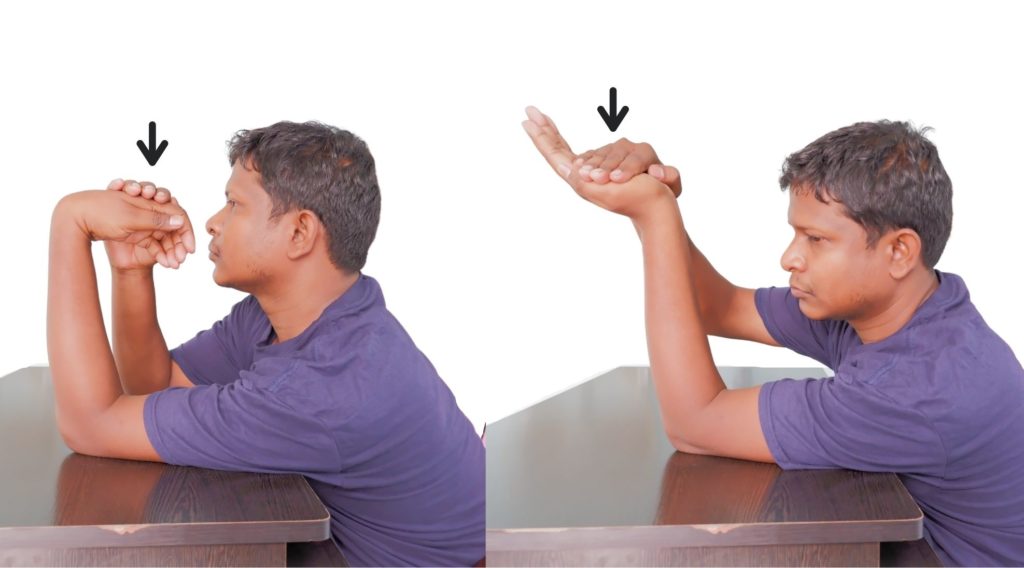
This exercise is designed to stretch your wrist and should be done in a seated position. It can be done anywhere, anytime, making it a convenient addition to your daily routine.
- Start by sitting before a table and flat your arm over it. Keep your perpendicular to the table, as shown in the figure.
- Keep your wrist in a neutral position, neither flexed nor extended and allow your fingers to curl around your thumb.
- Next, use your other hand to apply pressure to your fist, gently pushing it downwards. As you do this, you should feel a stretch in your wrist and forearm muscles.
- Hold this position for at least 30 seconds. Once you’ve held the stretch for 30 seconds, release the pressure and shake out your hand.
- Then, repeat the stretch in the opposite direction. This time, extend your wrist by bringing your fingers back towards your wrist. Again, use your other hand to gently apply pressure to your fist, pushing it away from your body.
- Remember to hold the stretch for at least 30 seconds, breathing deeply and relaxing your body.
- When you’ve completed the stretch on both sides, release the pressure and shake out your hands.
4) Forearm pronation supination
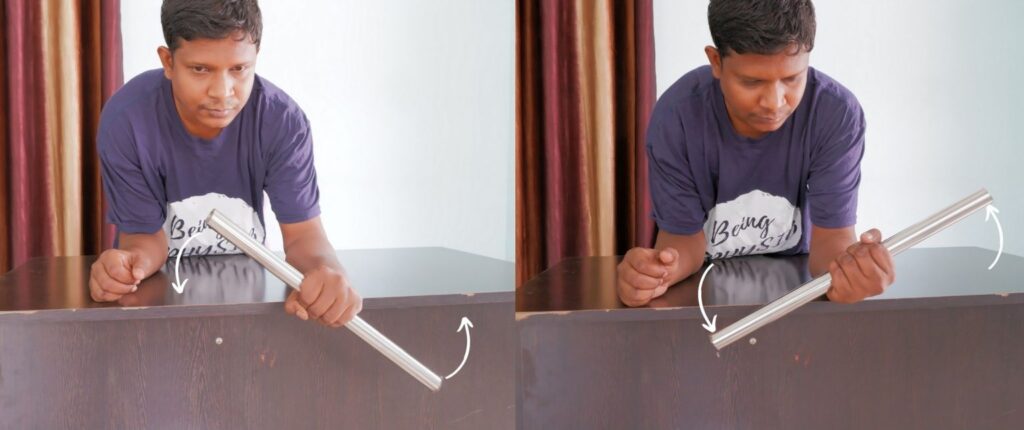
Taking care of forearm pronation and supination regarding elbow joint motions is essential. A study1 has demonstrated that 36% of all distal radius fracture cases develop forearm rotation restriction. So, it is necessary to take care of forearm rotation as well.
- To perform this exercise, you must stabilize your forearm by flattening it on a table.
- Then, rotate your forearm clockwise and anticlockwise. When you rotate it clockwise, it is called supination; when you rotate it anticlockwise, it is called forearm pronation.
- You can do this exercise without holding anything, but as you progress, it is recommended that you have a cane or a lightweight rod while moving your forearm in both directions. The momentum created by the cane will make the exercise more effective.
5) Shoulder exercises
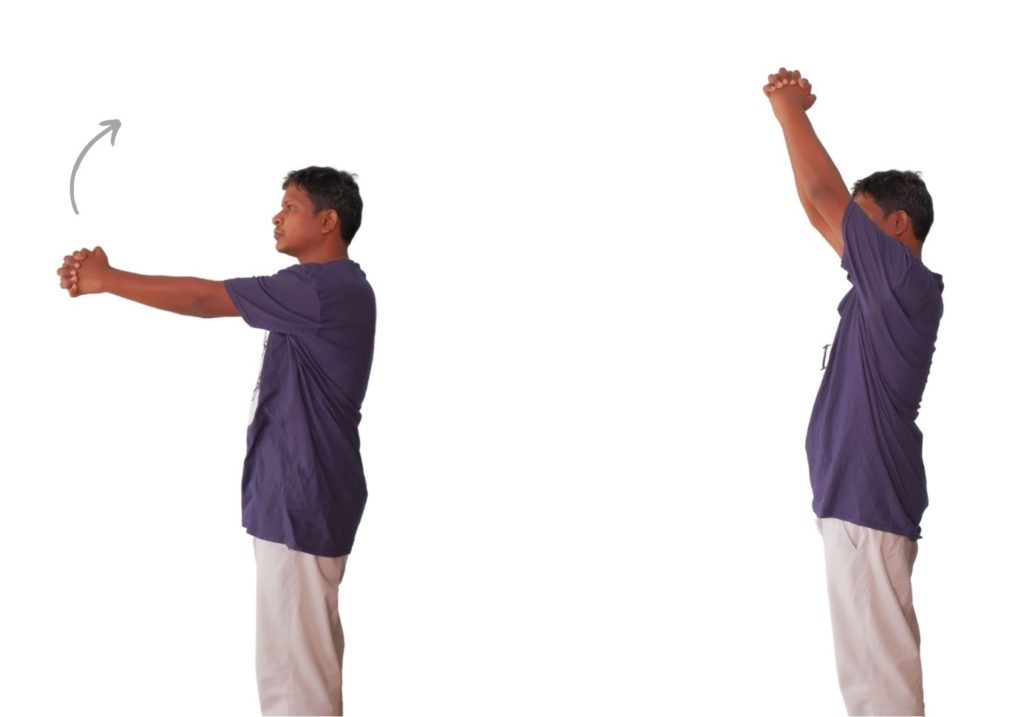
Shoulder stiffness is a common issue that many people experience, especially after long-term immobilization. One exercise that can help alleviate this stiffness is performed in a standing position and requires a cane, stick, or broomstick, which can be found in your home.
- To begin the exercise, hold the cane with your hand and ensure that the backside of your forearm is facing forward.
- Slowly elevate your shoulder while holding the cane to the point where you feel slight stiffness or pain. This will help stretch the shoulder muscles and increase mobility.
- Next, slowly lower your shoulder and repeat the process at least 20 to 30 times in a session.
6) Strengthening exercises
After removing a plaster cast, the grip strength of your hand may weaken. You can use a gel grip exercise ball made from soft silicone gel material to regain strength. To perform the exercise:
- Hold the ball and squeeze it as tightly as possible for a few seconds, then release.
- Repeat this exercise 10 to 15 times, taking a short break between each set.
- You can also try different variations of this exercise, such as squeezing the ball with your fingers one by one or using your palm.
- Performing these exercises regularly will help you regain your grip strength and loosen up your tight finger joints.
What is dinner fork deformity or colles fracture
Dinner fork deformity is a wrist joint deformity caused by a Colles fracture. So, what exactly is a Colles fracture? It is a distal radius fracture that occurs around the wrist joint. Suppose the distal fracture segment is slightly displaced upward, as seen in the figure. In that case, the resulting wrist deformity resembles the structure of a dinner fork, which is why it is called a dinner fork deformity. It is also known as a silver fork fracture.
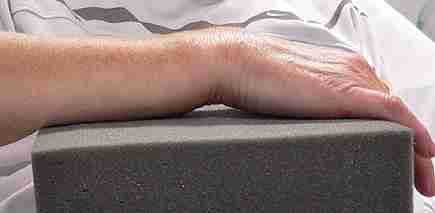
This fracture commonly occurs in middle-aged women when they fall on an outstretched hand. This can also happen due to direct assault on the wrist or a road traffic accident. Falling on an outstretched hand can also result in a fracture of a tiny bone in the wrist called the scaphoid fracture, which can cause constant wrist pain.

In simple terms, Colles fracture is a fracture on the outer side of the wrist joint (thumb) just about 1 or 1 ½ inches above the wrist joint. Our forearm consists of two bones, the radius and ulna. The radius bone is present on the outer side of the forearm, in line with the thumb.
This is where Colle’s fracture occurs. However, it’s not always necessary that the fracture occurs in the radius bone; it can also happen in the ulna bone, which is called a Smith’s fracture.
Depending on the impact of the fall, the lower fractured segment can be displaced from its place, taking the shape of a dinner fork. This fracture dislocation of the wrist gives rise to a ” dinner-fork deformity” or “silver fork deformity.”
Complications of Colles fracture
These are common complications that can happen after the fracture. Please note that these may or may not develop and depend on the severity of the fracture.
- Malunion of fracutred segment.
- Carpal tunnel syndrome.
- Painful wrist joint.
- Seudeck’s atrophy / reflex sympathetic osteodystrophy: It is characterized by severe pain, swelling of the hand and loss of movement.
Final word
Exercises may sometimes cause pain. Use the pain-relieving techniques mentioned above, but never stop exercising. If necessary, seek guidance from a qualified Physiotherapist near you.
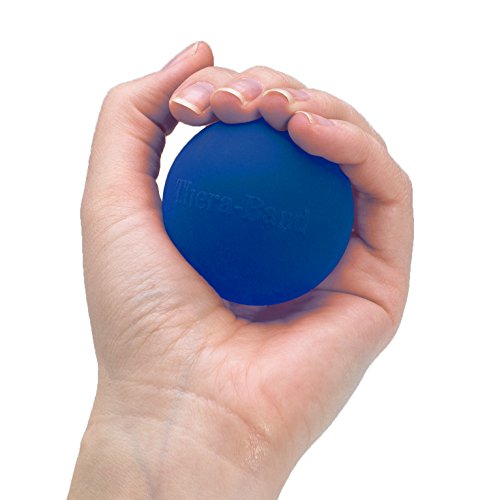

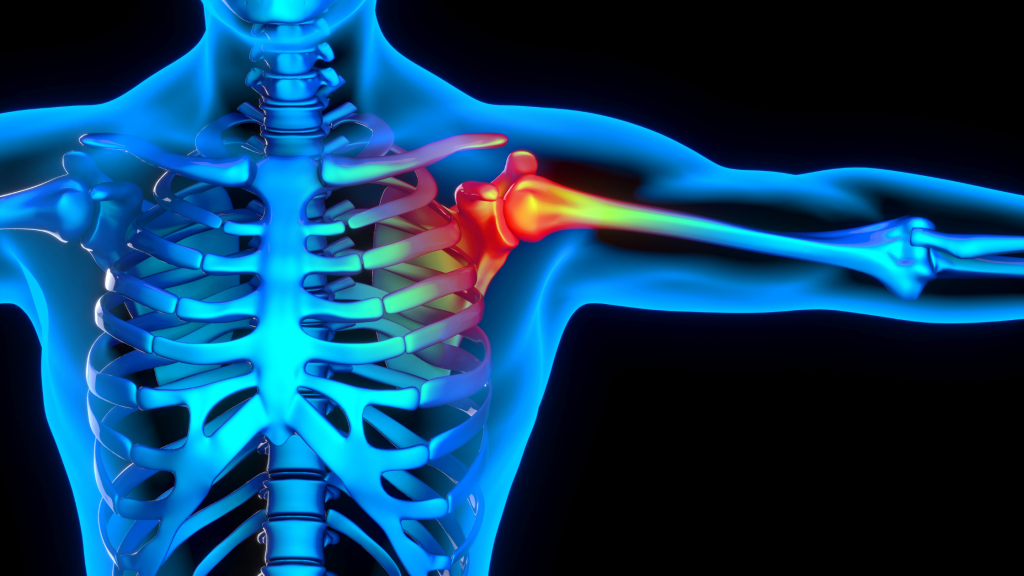



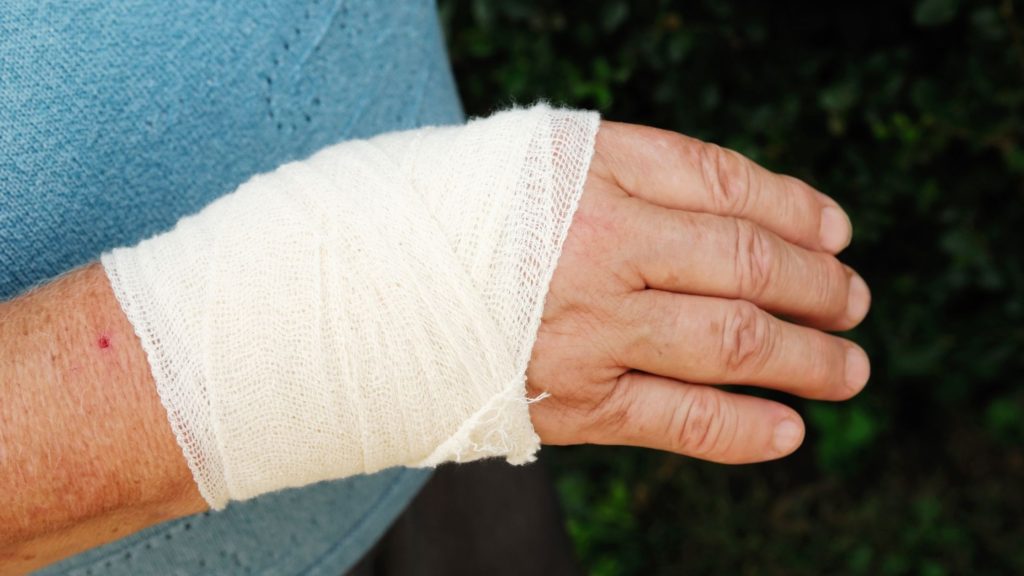
Pingback: How to Loosen Tight Shoulders? 7 Exercises fix tight shoulders - Physiosunit
Pingback: How to Contrast Bath Therapy for Hand & Foot Swelling - Physiosunit
Pingback: Monteggia fracture PT management - Physiosunit
Pingback: Monteggia fracture PT management : Physiosunit
Pingback: Contrast bath therapy: Protocol for edema, hand swelling : Physiosunit